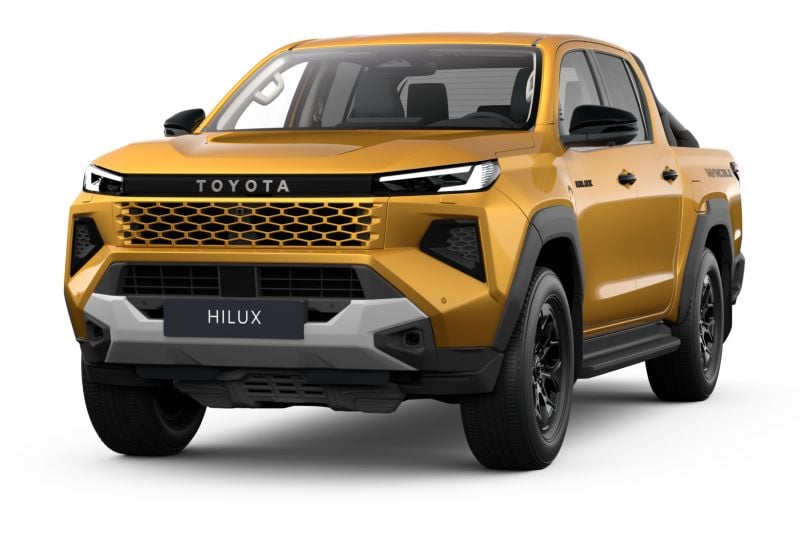Ninth Generation Toyota Hilux Debuts, Electric & Hydrogen Versions Confirmed

The Toyota Hilux pick-up truck will enter its ninth generation boasting a striking new look and a range expansion that will see full electric and fuel cell hydrogen versions join the line-up for the first time.
One of motoring’s most trusted nameplates with a legacy stretching right back to the 1960s, the Hilux has developed an enviable reputation worldwide for being an ultra-reliable workhorse.
However, the model will be brought right into the future with a major revamp that takes styling cues from the Toyota Land Cruiser SUV and a significant overhaul under the skin that will adopt alternative powertrains for the first time.
For this generation, Toyota will phase out the Single and Extended Cab body styles in favour of a Double Cab body style only.

Styled around the theme of ‘tough and agile’, the new Hilux gets an edgier, more modern appearance with minor differences between the ICE and BEV models.
The bluff front-end gets a pinched front bar brandishing the Toyota name, which stretches into a sharp, slender headlight design. Beneath sits a high-set mesh front-grille on the ICE model, while the battery version gets a panelled front fascia, both flanked by chunky air-intakes.
The lofty front-end design is indicative of the efforts Toyota has gone to ensure the integration of electric power doesn’t affect its famed abilities off the road. For instance, Toyota claims there is no difference in the permitted wading depth between the ICE and BEV version.

The Hilux gets arguably its biggest overhaul on the inside with the sturdy but dated fascia being replaced by a dashboard that, while contemporary-looking, is designed to be hard-wearing. Highlights include a large 12.3-inch touchscreen that is supported by logically located physical switchgear, plus AWD and off-road controls grouped in the central console.
Under the skin, the ICE-trim Hilux retains the same 2.8-litre turbodiesel engine available on the current generation, complete with a small but effective 48V lithium-ion battery to provide mild hybrid assistance, while improving fuel economy and emissions.
As with its predecessor, the Hilux turbodiesel maintains excellent load carrying ability of up to one-tonne and a full 3500kg of braked towing capacity.

Electric Toyota Hilux a Precursor for Hydrogen Power
Of great significance, however, is the arrival of full electric power with the Hilux getting a 59.2kWh lithium-ion battery with front and rear eAxles providing permanent four-wheel drive with 205Nm of torque generated at the front and 269Nm at the rear for a total of 475Nm.
Range has been set at a modest 150-miles with a payload of 715kg and 1600kg for towing mass. Toyota has explained the relatively small battery as being necessary to carefully fit the battery so it doesn’t compromise off-roading ability.
On the flip side, it means the Hilux has been maximised for a fast recharging that ensures minimal down time.
Electric power isn’t the only alternative for those seeking zero emissions, however, with Toyota confirming it will apply its hydrogen fuel cell technology to the latest generation Hilux.
Set to arrive in 2028, it is hoped the design of the hydrogen fuel cells will negate some of the range and payload limitations of the full electric version.

Focus on Off-Road Ability
If the electric and hydrogen Hilux represent some future-planning for the powertrains, things get a little more conventional with the chassis.
To ensure the Hilux consolidates its reputation for tackling the rough stuff, the Hilux holds onto its body-on-frame construction and makes use of its Multi-Terrain Select system (MTS).
Mirroring the effect of a low ratio transmission, MTS can either adapt automatically to surfaces to provide the correct level of grip and torque, or the appropriate setting can be chosen manually.
The ninth generation Toyota Hilux is scheduled to go on sale in the UK in 2026.
















